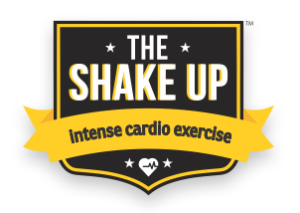You have been training the house down, you are beginning to experience the positive effects of all the hard work and then out of nowhere a little injury appears that you just can’t Shake (no pun intended).
Niggling injuries are fairly common in intense training programs. The key is to manage the injury, allow time for recovery and ensure that you are doing everything you can when it comes to body maintenance.
At the Shake UP we are surrounded by greatness and are super stoked to be aligned with some of the best allied health professionals on the Gold Coast.
We would be pretty silly if we didn’t seek support and guidance from guys like Peter Griffin,remedial massage/myotherapist. This guy is an absolute fitness enthusiast with a bachelor of exercise and sports science. Peter is a guru in human anatomy/physiology and is on a mission to improve the way people move!
We asked Pete to give us a word to the wise on understanding knee injuries.
Anterior knee pain is the most common presenting symptom in many physiotherapy, myotherapy and sports physician practises. Two common causes of anterior knee pain in sports people are patella femoral pain, patellar tendinopathy and Fat pad impingements.
Causes of Pain

During physical activities the extrinsic load is created by the body’s contact with the ground (ground reaction force) and is therefore moderated by body mass, speed of gait, surfaces and footwear. The number of loading cycles and frequency of loading are also important. During weight-bearing activities, any increase in the amount of knee flexion will increase the PFJ load. Therefore, when an individual experiences an increase in the magnitude of the PFJ load (e.g. higher training volume, increased speed of running, hill/stair running or bounding), this may overload the PFJ structures sufficiently to initiate a painful process. Intrinsic factors can influence both the magnitude and the distribution of the PFJ load. The ability of the patella to slide through its correct tracking position is another important factor when considering pain.

The illustration shows where the patella rubs against the femur and makes the patella Femoral joint. This is where the irritation occurs
And if the patella does not track through the femoral condyles properly this can have an internal effect on the patient’s symptoms. #PFJ: Patello femoral Joint
“If you feel you are suffering from some of these symptoms. Come and have a chat with me in the clinic”.
Pete is one of the best in the business and we strongly recommend taking care of your body with regular massage to keep you performing at your best!
Peter can be reached at Palm Beach Chiropractic or contact him on 0755345005 email – peter.griffin727.pg@gmail.com

